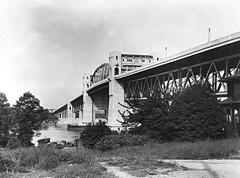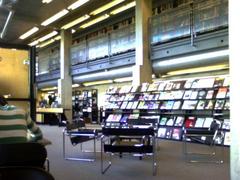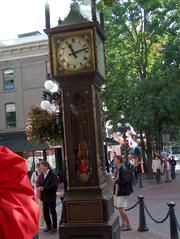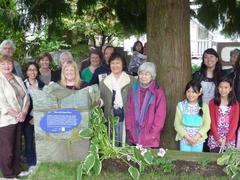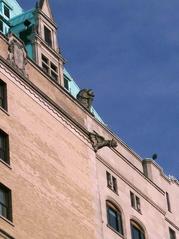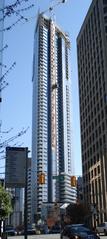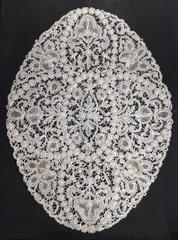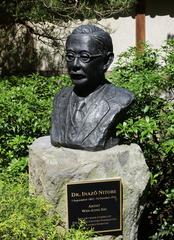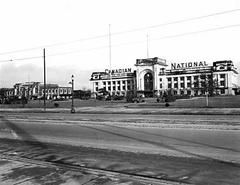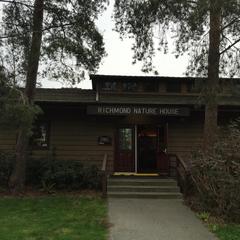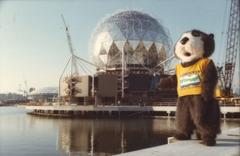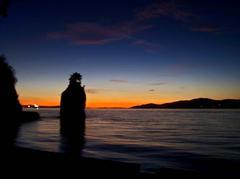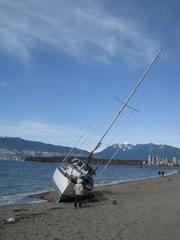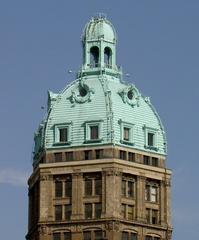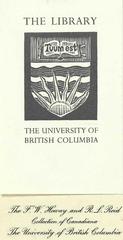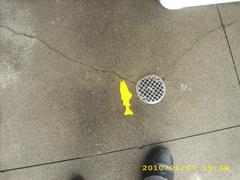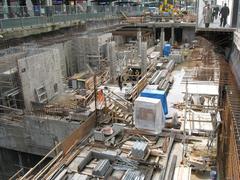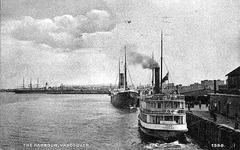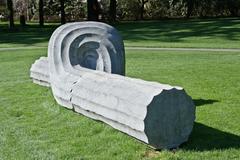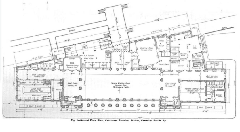
Museum of Vancouver: Visiting Hours, Tickets, and Comprehensive Guide to Vancouver Historical Sites
Date: 04/07/2025
Introduction
The Museum of Vancouver (MOV), nestled in scenic Vanier Park, is the city’s oldest and largest civic-history museum. Established in 1894, MOV offers a deep dive into Vancouver’s layered cultural, historical, and social heritage. Through a blend of compelling permanent galleries, rotating special exhibitions, and educational programs, MOV tells the diverse stories that have shaped Vancouver—past and present. As a steward on the unceded territories of the xʷməθkʷəy̓əm (Musqueam), Sḵwx̱wú7mesh (Squamish), and səlilwətaɬ (Tsleil-Waututh) Nations, the museum is dedicated to centering Indigenous perspectives and fostering reconciliation. This guide will provide detailed information on visiting hours, tickets, exhibits, accessibility, travel tips, and more, ensuring you make the most of your visit to this premier Vancouver historical site.
For up-to-date details, always check the Museum of Vancouver official website and related resources (TourbyTransit, Vancouver Planner, Artsy Traveler).
Table of Contents
- Introduction
- History and Evolution
- Indigenous Context and Reconciliation
- Collections and Exhibitions
- Visiting Hours and Tickets
- Guided Tours, Special Events, and Photography
- Travel Tips and Accessibility
- Nearby Attractions
- Visitor Experience and Community Engagement
- Frequently Asked Questions (FAQ)
- Practical Information and Contact
- Summary and How to Enhance Your Visit
- References
History and Evolution
Founding and Growth
Founded in 1894 by the Art, Historical, and Scientific Association of Vancouver, the museum began as a modest collection reflecting Vancouver’s burgeoning identity. Early exhibits were housed in temporary venues until 1905, when the museum found a permanent home at the Carnegie Library in Downtown Eastside (TourbyTransit). In 1957, the museum moved to a dedicated building on Burrard Street, signifying the city’s post-war growth (Vancouver Planner).
Centennial Expansion
A pivotal moment came in 1967, when MOV relocated to Vanier Park in a new Centennial Museum building, easily recognized by its iconic conical roof. This move enabled the museum to broaden its focus beyond local history, embracing art, design, and the city’s evolving cultural landscape (TourbyTransit).
Name and Mission
Reflecting its civic commitment, the museum became the Vancouver Museum in 1981, and in 2009, it adopted its current name, Museum of Vancouver, to better represent its dedication to telling the city’s multifaceted stories (TourbyTransit). Today, MOV stands as Canada’s largest civic-history museum (Vancouver Planner).
Indigenous Context and Reconciliation
MOV is located on the unceded territories of the Musqueam, Squamish, and Tsleil-Waututh Nations (Museum of Vancouver). The museum recognizes its responsibility to foreground Indigenous histories and perspectives. Permanent exhibitions like “The City Before the City” and the Ćəsnaʔəm gallery, developed in partnership with the Musqueam Nation, explore Vancouver’s 5,000-year Indigenous history and ongoing repatriation efforts (Vancouver Planner, Vancouver Planner). MOV is committed to reconciliation through artifact repatriation and transparent dialogue about museum practices (Museum of Vancouver).
Collections and Exhibitions
Permanent Galleries
MOV’s permanent galleries chronicle Vancouver’s transformation through immersive storytelling and artifacts:
- Gateway to the Pacific (1900s–1920s): The city’s emergence as a major port and multicultural hub.
- Boom, Bust, and War (1930s–1940s): Economic struggles and wartime experiences.
- The Fifties Gallery: Postwar optimism, suburbanization, and shifting cultural norms.
- Neon Vancouver/Ugly Vancouver: A dazzling display of vintage neon signs from the mid-20th century (Wikipedia).
- Indigenous Beginnings: Artifacts and oral histories honoring the Musqueam, Squamish, and Tsleil-Waututh Nations (Artsy Traveler).
Collections
With over 70,000 artifacts, MOV’s collections capture Vancouver’s social history, civic milestones, design trends, and Indigenous heritage. Highlights include Coast Salish art, mid-century furniture, iconic photographs, and objects from key civic events (Art-BC).
Rotating and Special Exhibitions
MOV’s temporary exhibits address contemporary issues such as social justice, environmental stewardship, and community identity. Recent and upcoming feature exhibitions include:
- Evelyn Roth Live at MOV (July 11, 2025): Wearable art and live performances, with Roth’s costumes joining the museum collection (Museum of Vancouver Events).
- Ink from Elsewhere (July 20, 2025): A workshop exploring natural dyes from invasive plants, linking ecology and art (Museum of Vancouver Events).
Community-focused exhibitions frequently highlight urban Indigenous experiences, immigration, sustainability, and local innovation.
Visiting Hours and Tickets
- Hours: Daily, 10:00 am – 5:00 pm. Extended hours until 8:00 pm on Thursdays, Fridays, and Saturdays (Art-BC).
- Admission: Adults $17; Seniors & Students $12; Youth (6–17) $10; Children under 5 and Indigenous visitors free (Artsy Traveler).
- Discounts: Admission by donation on the last Thursday of each month from 5:00 pm to 8:00 pm.
- Tickets: Purchase online via the MOV website, at the entrance, or through authorized resellers. Combined passes for nearby Vanier Park museums are available (Timeout).
Guided Tours, Special Events, and Photography
- Guided Tours: Regularly scheduled tours provide deeper insight into exhibitions; check the MOV website for availability.
- Special Events: MOV hosts lectures, workshops, family days, and cultural celebrations (Museum of Vancouver Events).
- Photography: Non-flash photography is welcome in most areas; observe posted signs for restrictions. The museum’s architecture and Vanier Park location offer excellent photography opportunities.
Travel Tips and Accessibility
- Location: 1100 Chestnut Street, Vanier Park, Vancouver.
- Getting There:
- Transit: Bus #2 stops at Cornwall Ave, a short walk from MOV (Artsy Traveler).
- Cycling: Mobi Bike Share station nearby.
- Ferry: False Creek Ferry stops at the Vancouver Maritime Museum.
- Walking: 15–20 minutes from Granville Island along the seawall.
- Parking: Available in Vanier Park (strictly monitored).
- Accessibility: Full wheelchair access, accessible washrooms, ramps, elevators, and assistive listening devices. Sensory-friendly programming and service animals are supported.
- Facilities: Gift shop, accessible restrooms, seating, Wi-Fi, interactive exhibits, and family-friendly activities.
Nearby Attractions
Vanier Park is a cultural hub featuring:
- H.R. MacMillan Space Centre
- Vancouver Maritime Museum
- Vancouver Academy of Music
- Kitsilano Beach: Ideal for relaxation and waterfront views.
- Granville Island: Accessible by foot or ferry, renowned for its public market and artisan shops (Artsy Traveler).
Combined tickets offer savings for those visiting multiple sites (Timeout).
Visitor Experience and Community Engagement
MOV is celebrated as a “hidden gem” that connects Vancouver’s stories to broader cultural movements (TourbyTransit). The museum’s inclusive approach, commitment to reconciliation, and dynamic public programming foster a welcoming atmosphere for all ages and backgrounds (Museum of Vancouver).
Frequently Asked Questions (FAQ)
Q: What are the Museum of Vancouver’s visiting hours?
A: Daily 10:00 am–5:00 pm, with extended hours until 8:00 pm on Thursdays, Fridays, and Saturdays.
Q: How much do tickets cost?
A: Adults $17, seniors and students $12, youth $10, children under 5 and Indigenous visitors free. Combined passes available.
Q: Are guided tours available?
A: Yes; check the MOV website for schedules.
Q: Is the museum wheelchair accessible?
A: Yes; the MOV offers accessible facilities and services.
Q: Is photography allowed?
A: Non-flash photography is permitted in most areas.
Q: How do I get to MOV by public transit?
A: Multiple bus routes serve Vanier Park; details on the MOV website.
Q: Are there family-friendly activities?
A: Yes; interactive exhibits, workshops, and scavenger hunts are available.
Practical Information and Contact
- Address: 1100 Chestnut Street, Vancouver, BC, V6J 3J9
- Phone: +1 604-736-4431
- Website: https://museumofvancouver.ca/
- Social Media: MOV is active on major platforms with updates on exhibitions and events.
Summary and How to Enhance Your Visit
The Museum of Vancouver is a cornerstone of the city’s cultural landscape, offering a nuanced look at Vancouver’s history, from its Indigenous roots to its contemporary identity. With engaging galleries, diverse collections, and inclusive programming, MOV provides an educational and memorable experience for visitors of all ages.
Tips for Your Visit:
- Check current exhibitions and events in advance on the MOV website.
- Consider combined tickets for other Vanier Park attractions.
- Download the Audiala app for audio guides, event updates, and personalized visitor experiences.
- Follow MOV on social media for real-time news.
- Explore related guides: Top Historical Sites in Vancouver, Best Museums to Visit in Vancouver.
- Reflect on MOV’s location on unceded Indigenous land and engage with exhibits respectfully.
Ready to explore Vancouver’s rich heritage? Plan your visit to the Museum of Vancouver and discover the stories that define this dynamic city!
References
- Museum of Vancouver official website (museumofvancouver.ca)
- TourbyTransit
- Vancouver Planner
- Artsy Traveler
- Art-BC
- Timeout
- WBN News
- Wikipedia


